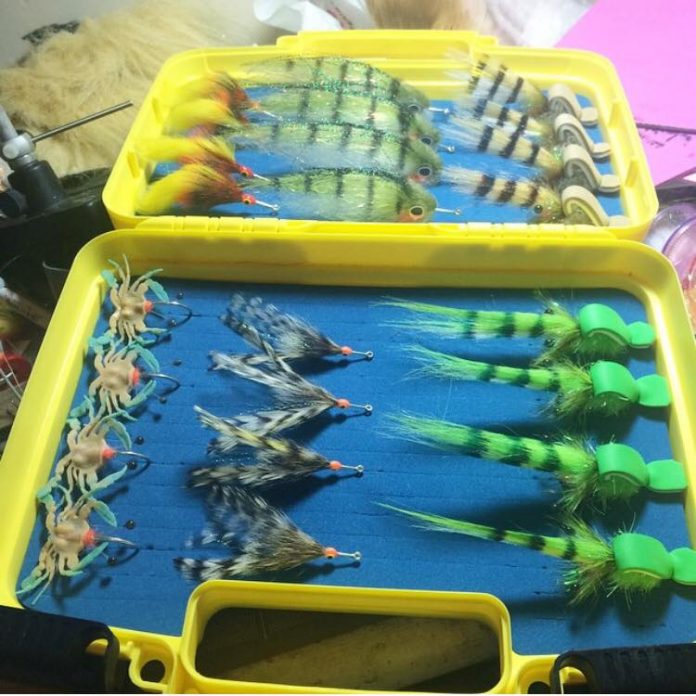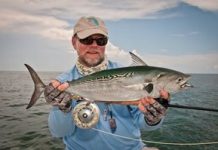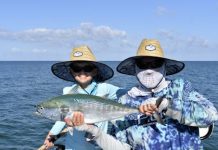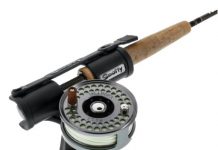By: Capt. Jon Bull
In past winter’s, temperatures were barely rising above the mid 50’s. Nighttime temps were dipping below freezing in most parts of the state. Prolonged 50 degree water temperature spawned discussions of stunned or dead snook on many popular online chat boards. Most fly anglers were trying to decide whether or not to stay at home or go brave the elements. Many fly anglers may have decided that it was time to pack the fly gear away until spring approaches……they would have been wrong. Even though we had an unusually brutal winters in recent years, winter time can afford fly fishers a myriad of opportunities to get their tippets stretched on some of Florida’s most challenging game fish.
The key to success is changing your philosophy and your strategy. I was recently asked what my strategies for winter time success were. This is what I came up with……
My strategy for winter is to get out on a mid-morning, incoming tide. If it is low early in the morning (4:00-6:00), I would look for lee shorelines that are going to be exposed to the sun for the longest period of time during the morning and them hit them around 10:00-11:00….or later. I like my water depth to be between +0.5-1.0 ft. The redfish, trout, and sheepshead will be moving up the flats as soon as there is enough water to cover their backs. The sun exposure will warm the substrate and activate all the little creepy crawlies that they like to eat. Plus, that sun-exposed flat will have the warmest water on the flat…making it a natural spa….especially if it is dark, mud bottom. At the aforementioned water depth, I can pole my skiff and sight fish, easily, from a distance.
I also look for two wading birds to dictate where I will start fishing. We see many white egrets during the winter. Because they are a smaller wading bird, where they are wading is generally too shallow for my target species, but if there is a deeper trough or hole near them, I will bet the game fish are in there waiting for the tide to rise a little higher. The second wading bird I look for is the great blue heron. As I work the flats, I try to notice how much of the heron’s legs I can see. If I can see more than half of his legs out of the water, chances are the water is too shallow to hold game fish. However, if the heron’s tail feathers are touching the water, you better believe I will start working that area. The egrets and herons feed on the same forage that the reds, trout, and sheepies will be feeding on and are clear markers that show where game fish may be located at.
In terms of gear, I like to scale down to a 6-8 weight Orvis Helios 2 rod with an Orvis Mirage III or IV reel. The Helios 2 rod at a 6-8 weight, has the feel of a 4-6 weight, so all day casting will cause zero fatigue. The water is very high in oxygen content so the lighter rods will not cause any extra stress to reds, trout, and sheepies. With the lower water levels during winter, a weight forward, floating line is sufficient. I prefer an all clear floating line which will prevent overhead line blast which could spook fish while false casting. They can handle it. In these gin clear water conditions, I also like to scale down my tippet size to 8-10 pound tippet. I generally go to 12 pound with no bite tippet. My flies, typically, will follow the saying Capt. John Kumiski mentioned to me one day on Mosquito Lagoon: “Down and Brown.” Think about what they are eating during this time of year, usually not greenbacks. Small shrimp and crab patterns that hang near the bottom will do the trick.
Other tips……
**DO NOT TARGET SNOOK DURING THIS TIME OF YEAR.**
**Always use loop knots to connect your fly to your tippet.**
**Make sure you allow extra time to adequately stretch out your fly line.**
In terms of presentation, SLOW, SLOWER, and EVEN SLOWER THAN BEFORE. Things don’t move fast in the winter and shrimp and crabs do not move like a baitfish (fast). I like to strip my fly into position, let it settle, and then bump the fly as the fish approaches. Usually that will entice a strike….especially if there are multiple fish cruising together. I have found that more often than not the redfish and sheepshead tend to hang together on the flats in groups of 2 or 3.
One last thing…..the “SLOW, SLOWER, and EVEN SLOWER THAN BEFORE” also applies to your POLING technique……NOT YOUR TROLLING TECHNIQUE. If you use your trolling motor in these conditions, forget it. You have to pole and you have to pole SLOWLY. These fish will be very spooky in those water depths and if you want a shot, you have to make like a hole in the water. Getting out and wading will also help if you do not have poling capabilities.
So get out there and take advantage of the low angler/boat pressure on the flats. Just make sure that you add some extra clothes and a thermos of your favor Starbucks coffee to your gear list. And should the day’s effort result in fly fishing success or fly fishing futility, a flask of some other warming liquids wouldn’t hurt either!
- Learning to Fly 4 - February 5, 2016
- Learning to Fly 5 - July 24, 2013
- Learning to Fly 3 - July 24, 2013













